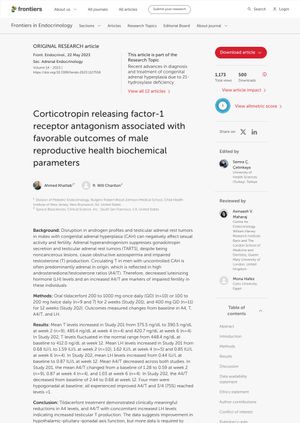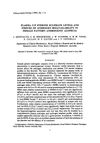Corticotropin Releasing Factor-1 Receptor Antagonism Associated With Favorable Outcomes of Male Reproductive Health Biochemical Parameters
May 2023
in “
Frontiers in Endocrinology
”

TLDR Blocking CRF1 receptors improved male hormone levels and reduced testicular tumor size in men with a specific adrenal condition.
The research investigated the effects of tildacerfont, a CRF1 receptor antagonist, on male reproductive health biochemical parameters in 14 men with congenital adrenal hyperplasia (CAH). The results showed that tildacerfont treatment led to increased testosterone and luteinizing hormone (LH) levels, and a decrease in the androstenedione to testosterone (A4/T) ratio, suggesting a recovery of hypothalamic-pituitary-gonadal (HPG) axis function. Additionally, a participant experienced a 23% reduction in testicular adrenal rest tumors (TARTs) volume after 6 weeks of treatment. After discontinuing tildacerfont, levels of serum A4, Testosterone, LH, and A4/T ratio reverted towards baseline, indicating the changes were due to tildacerfont exposure. All four men with baseline hypogonadotropic hypogonadism showed improvement in LH and A4/T ratios, and three of them normalized LH levels and reached A4/T ratios <1. The study suggests that CRF1 antagonism may improve gonadal Leydig cell function, but it did not analyze specific markers of Sertoli cell function. The use of total testosterone rather than free testosterone may not accurately reflect hyperandrogenic states associated with low sex hormone binding globulin levels in individuals with a high BMI.
